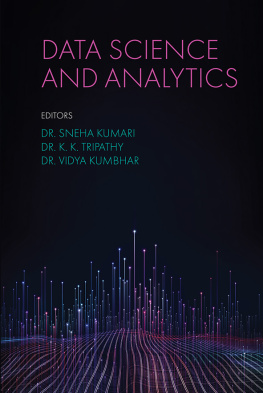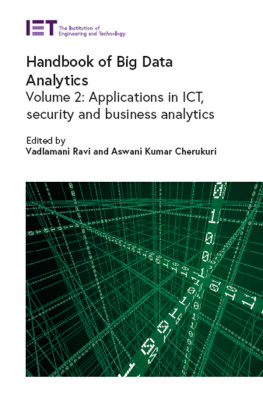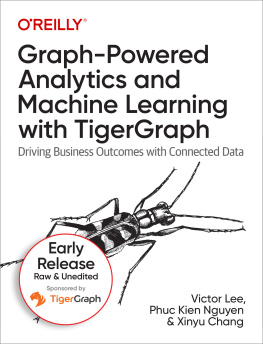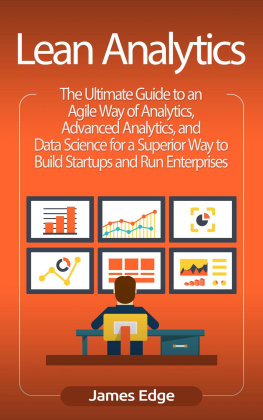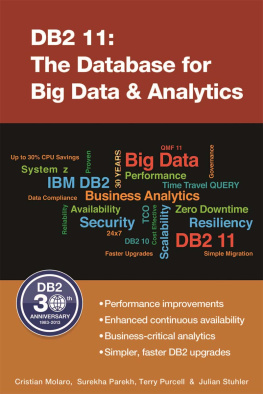COLLABORATIVE INTERNET OF THINGS (C-IOT)
FOR FUTURE SMART CONNECTED LIFE AND BUSINESS
Fawzi Behmann
Kwok Wu
This edition first published 2015
2015 John Wiley & Sons Ltd
Registered office
John Wiley & Sons Ltd, The Atrium, Southern Gate, Chichester, West Sussex, PO19 8SQ, United Kingdom
For details of our global editorial offices, for customer services and for information about how to apply for permission to reuse the copyright material in this book please see our website at www.wiley.com.
The right of the author to be identified as the author of this work has been asserted in accordance with the Copyright, Designs and Patents Act 1988.
All rights reserved. No part of this publication may be reproduced, stored in a retrieval system, or transmitted, in any form or by any means, electronic, mechanical, photocopying, recording or otherwise, except as permitted by the UK Copyright, Designs and Patents Act 1988, without the prior permission of the publisher.
Wiley also publishes its books in a variety of electronic formats. Some content that appears in print may not be available in electronic books.
Designations used by companies to distinguish their products are often claimed as trademarks. All brand names and product names used in this book are trade names, service marks, trademarks or registered trademarks of their respective owners. The publisher is not associated with any product or vendor mentioned in this book. This publication is designed to provide accurate and authoritative information in regard to the subject matter covered. It is sold on the understanding that the publisher is not engaged in rendering professional services. If professional advice or other expert assistance is required, the services of a competent professional should be sought.
Limit of Liability/Disclaimer of Warranty: While the publisher and author have used their best efforts in preparing this book, they make no representations or warranties with respect to the accuracy or completeness of the contents of this book and specifically disclaim any implied warranties of merchantability or fitness for a particular purpose. It is sold on the understanding that the publisher is not engaged in rendering professional services and neither the publisher nor the author shall be liable for damages arising herefrom. If professional advice or other expert assistance is required, the services of a competent professional should be sought.
Library of Congress Cataloging-in-Publication Data applied for
ISBN: 9781118913741
Table of Contents
Pages
Guide
List of Illustrations
List of Tables
Foreword
I recall sitting in the Bell Labs auditorium in Holmdel, New Jersey in 1980 listening to a lecture by the head of research, Arno Penzias. He had recently won the Nobel Prize for his radio astronomy work on the origins of the universe. But this day he was evangelizing a technology we all knew, but did not fully appreciate; at least that was Dr. Penzias message. As engineers and scientists we did not lack appreciation for the invention, the microprocessor. The Intel 8080 and Motorola 6800 replaced thousands of discrete small- and medium-scale integrated circuits used in random logic designs, cutting development time and costs dramatically. Some in the room were even determined to invent the next generation of microprocessors. That was not what Dr. Penzias was proselytizing. His was a challenge of innovation with the microprocessor. That vision was one of thousands of microprocessors in homes, automobiles, and offices. By sharing his vision, he was spurring us to think not about problem solving but about possibilities. At the time, I dare say most of us failed to grasp the full import of his message because of our linear thinking. Engineers in particular are prone to linear thinking. We are skilled at wrapping our minds around a single complex problem, going ever deeper, searching for clever ways to overcome natural barriers to achieve a novel and useful design.
Even in hindsight we think linearly, as does much of the general public. If you ask who changed Americas homes by lighting them with electricity? you are likely to hear the name of Thomas Edison, not Nikola Tesla and certainly not James Watt. Yes, Edison is credited with the invention of the incandescent light bulb, but he waged a long legal and publicity war against Teslas invention of alternating current (AC), advocating his own choice of direct current (DC). In that way he impeded, not hastened the lighting of Americas homes. Without AC generation and transmission, we would all need DC power plants in our basements to light our homes. Tesla made centralized power a practical and commercial reality. As for James Watt, it was his steam turbines that converted fossil fuel, primarily coal, into electricity so that it could be transmitted over Teslas network to power Edisons bulb. Without Watts steam engine, Edison and Teslas inventions would have been subjects for demonstration in undergraduate physics.
Behind the invention of the Internet is a similar story. Vint Cerf and Robert Kahn are the names that come to many engineers when asked about the origins of the Internet. That recognition is richly deserved. Their contribution of TCP is foundational to todays network, and without their guidance and advocacy, the Internet would not have evolved to the one we know today. Yet most of the general public knows little or nothing of TCP. It is more likely that when they think of the Internet, they see the World Wide Web and the web browser, invented by Tim Berners-Lee and Marc Andreesen, respectively. While the public is not likely to recognize those names either, they do recognize the names of Steve Jobs and Bill Gates, and so they may receive popular credit. That too is deserved, without the personal computer, the Internet would look very different indeed. Perhaps, the most underappreciated Internet engineers are Dr. Emmanuel Desurvire and Dr. David N. Payne. Without their invention of the Erbium Doped Fiber Amplifier (EDFA) or the invention of modern fiber-optic cable, Internet backbones would be operating over coaxial cable at speeds of megabits per second, not terabits per second. We would be stuck with our 38 kbps voice band modems. Remember how much fun it was downloading a song or an image with that? To be fair, it took all of these inventions and contributions to make our Internet a reality.
These stories are tales of the convergence of inventions at a single place and time in history that unleashed floods of innovation that flowed for decades, transforming societies, businesses, and even cultures. No one sat down and decided that to have a successful Internet, they would need a reliable transport protocol, fiber-optic communication, a multimedia web protocol, personal computers, and a browser. However, when they all came together in the early 1990s, innovators and venture capitalists began to see and explore the possibilities. In the late 1990s and early 2000s, the public, investors, and media saw new sites and businesses announced daily, as eCommerce, eBusiness, and B2B (business-to-business) were added to the lexicons of the world. Some companies rose from nothing to great heights, such as Webvan, only to fall again as unsustainable. Others, such as Egghead, saw their entire business model turned on its head. An industry it had helped create, the personal computer industry, and a technology they made popular, the voice band modem, turned on them. Their success made their brick and mortar franchise obsolete. Software could be downloaded without going to the local Egghead store, and much of the software was free.



